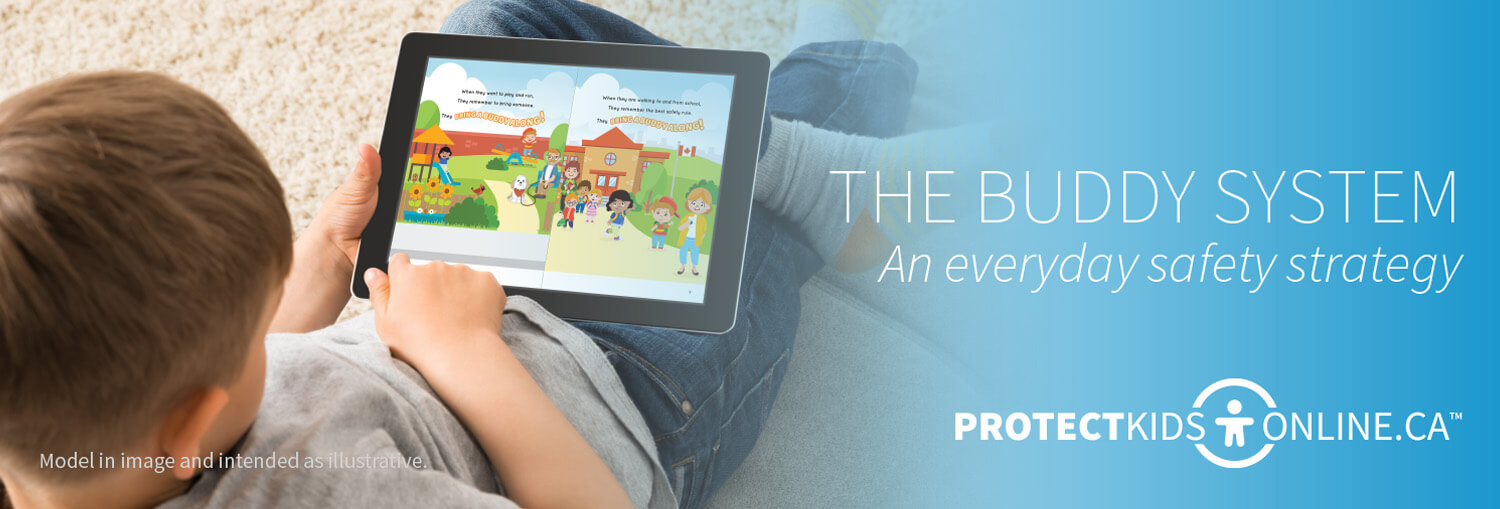New Billy book brimming with lessons about the buddy system

The buddy system is a fundamental safety strategy for helping to keep children safe every day, whether they’re travelling to school, shopping in a store, or surfing the web. In the Canadian Centre for Child Protection’s (C3P) latest storybook, Billy and Basmah Bring a Buddy Along, six‑year‑old Billy from the Billy Brings his Buddies program and his new friend, Basmah, help teach families about the buddy system.
In the newly designed book, Billy and Basmah play in and explore their community with a safe buddy—like Billy’s mom. To help remember this safety strategy, readers are encouraged to sing, “When you are going any place, bring a buddy along!”

What is the buddy system?
The buddy system is a personal safety strategy that states there is safety in numbers. This strategy can be incorporated into children’s everyday lives to reinforce life‑long safety habits, and empowers them with skills to stay safe by teaching kids who a safe buddy is and when they should bring a buddy along.
Not only can it help your child stay safe when heading to the playground, but it can also help them navigate the internet. Using the buddy system while online communicates to children that their buddy is there to help them stay safe. For youth, the buddy system evolves into parents/guardians having conversations with them about online safety and reinforcing that they can turn to their parents if they need help.

Who is a buddy?
A buddy for younger children is someone who is old enough to care for them, like a grandparent, older sibling, babysitter, or teacher. In Billy and Basmah Bring a Buddy Along, Billy knows that his or Basmah’s parents are great buddies to travel with.
For youth, a buddy can be a friend who accompanies them on trips to the mall, arcade, a party, etc. If they arrive somewhere with a buddy, they should also leave with their buddy.
While youth use social media, online games, or connect online, parents/caregivers should always be their buddy. This doesn’t mean sitting next to them every time they use a device, but rather having regular conversations about what they do online. Asking them what games they play, what sites they visit, and whom they talk to shows that you’re interested. These regular everyday conversations can make youth feel more comfortable opening up and coming to parents if they need help.

Why should children use a buddy?
For younger children, someone old enough to care for children accompanying them whenever they leave the house helps make sure they get to their destination safely. For youth, having a friend with them while they’re out and about does the same. No matter children’s age, it’s important to travel in numbers.
Families adopting these habits when their children want to use an electronic device also helps to keep them safe. There is no better parental control than parents being involved in their children’s online activity.
What can you do?
Make the buddy system a daily safety habit, like looking both ways before crossing the street and wearing a bicycle helmet while riding. Join your children in engaging in the buddy system by asking, “Who would be a good buddy to bring on a walk?” and discussing who are safe or unsafe buddies.
Monitor young children’s internet use, review the content they want to access, and regularly ask youth what they are up to online to engage in the buddy system. There are tips here that can help get the online safety conversation started at any age.
For more information and resources for both families and children, visit BillyBuddy.ca and cybertip.ca/online-harms.